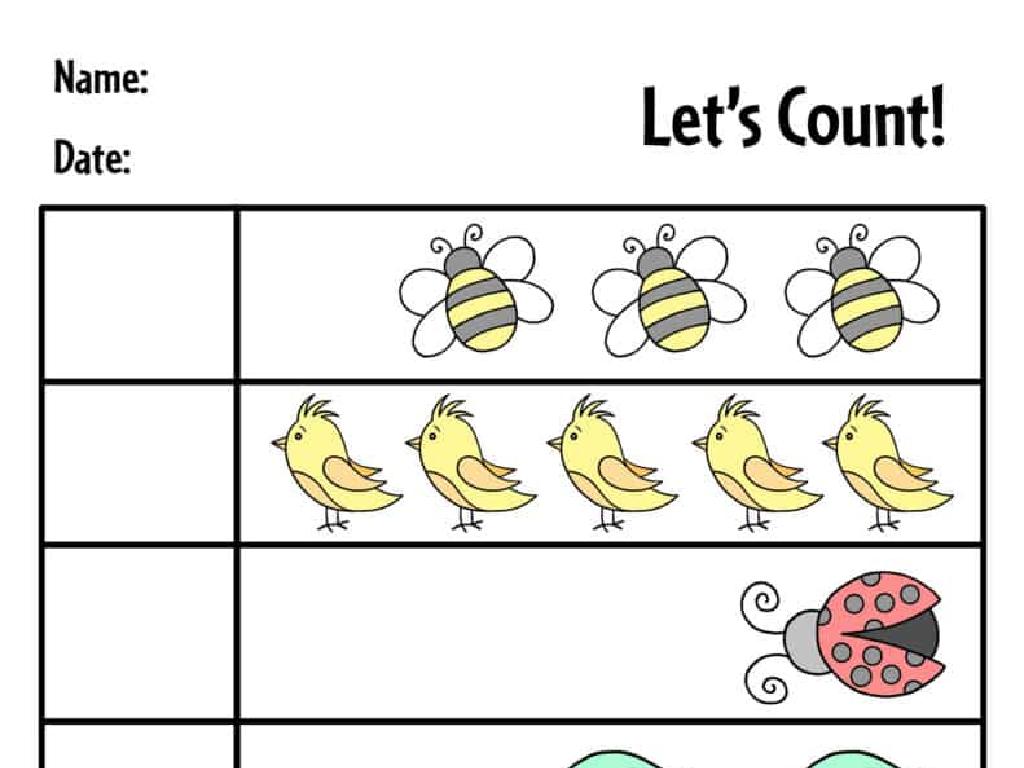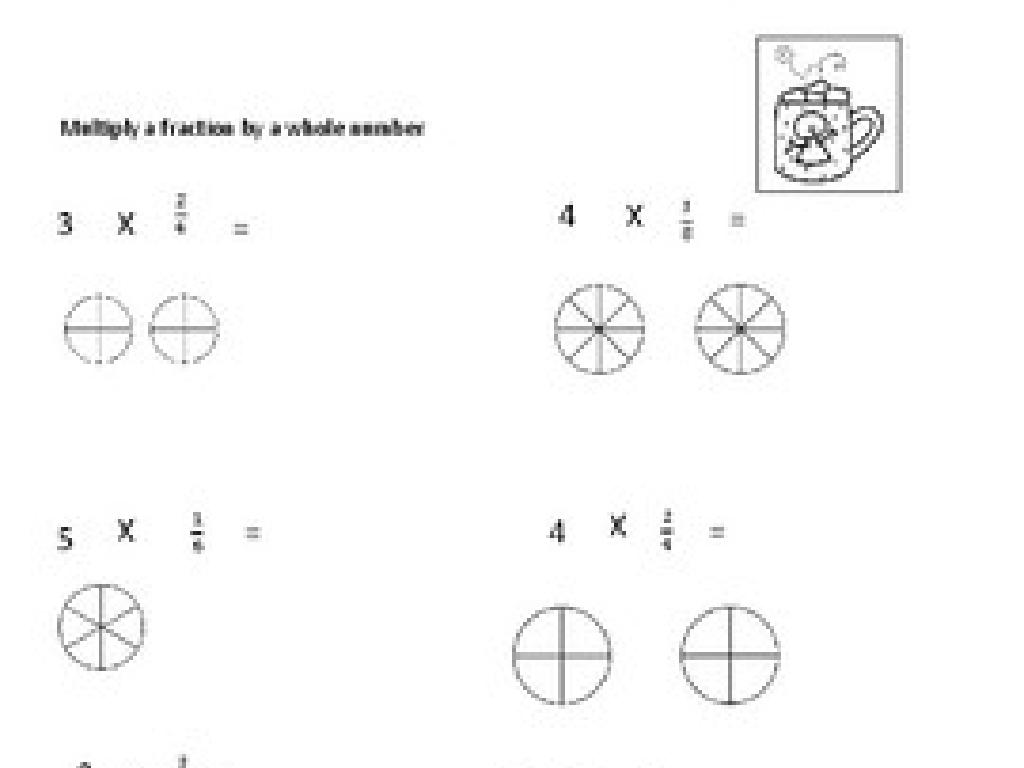Formatting Titles
Subject: Language arts
Grade: Third grade
Topic: Formatting
Please LOG IN to download the presentation. Access is available to registered users only.
View More Content
Welcome to Formatting Titles!
– Why are titles important?
– Recognizing different titles
– Titles tell us the name of books, articles, and stories
– Formatting book titles
– Use italics or underlining for book titles
– Formatting article titles
– Use quotation marks for article titles
|
This slide introduces the concept of formatting titles to third-grade students. Begin by discussing the importance of titles and how they help us identify and refer to different works like books and articles. Explain that titles need to be formatted correctly to stand out and to follow writing rules. Show examples of book titles formatted with italics or underlining, and article titles with quotation marks. Use familiar book and article titles as examples. Encourage students to think of their favorite books and articles and consider how the titles are presented. This will help them understand the concept of title formatting in a context that is relevant and interesting to them.
Understanding Titles in Writing
– What is a title?
– It’s the name of a book or essay
– Titles predict content
– They hint at the story or topic inside
– Formatting makes titles pop
– We use italics or underlining for book titles
– Practice formatting titles
|
This slide introduces the concept of titles and their importance in written works. Explain that a title is essentially the name of a book, essay, or any other piece of writing. It gives the reader an idea of what to expect from the text. Emphasize how titles help organize information and attract attention to the writing. Discuss how formatting, such as using italics or underlining, can make titles stand out. Engage the students by having them practice formatting titles of their favorite books or stories, reinforcing the lesson with a hands-on activity.
Types of Titles and Formatting Rules
– Different titles we use
– Books, movies, articles, etc.
– Each title has unique rules
– For example, book titles are italicized
– Recognizing titles around us
– Think of titles you know
– Share titles of your favorite book or movie
|
This slide introduces students to the concept of formatting titles in different contexts. Explain that titles are special names for things like books, movies, and articles, and they are written in a specific way to stand out. Each type of title, such as a book title or a movie title, has its own set of rules for how it should be formatted. For instance, book titles are usually italicized or underlined. Encourage students to think about and share titles they are familiar with, which could be from their favorite books or movies they’ve watched. This will help them relate to the topic and understand the importance of formatting titles correctly. The activity of sharing will also make the learning interactive and fun.
Formatting Book Titles
– Use Italics for book titles
– Or underline book titles
– Example: Harry Potter and the Sorcerer’s Stone
– This is how we show a title is important
– Let’s practice with a title you know!
– Think of your favorite book and write its title
|
This slide introduces students to the concept of formatting book titles, which is an important part of writing and reading in Language Arts. Emphasize that when they come across italicized or underlined text, it often signifies a book title. Provide the example of ‘Harry Potter and the Sorcerer’s Stone’ to show proper formatting. Then, encourage students to practice by thinking of a book they’ve read or like and writing down the title using italics or underlining. This activity will help reinforce the concept and give them a chance to apply what they’ve learned. Make sure to walk around the classroom to assist any students who may be struggling with this concept.
Formatting Movie Titles
– Write movie titles in Italics
– Or underline movie titles
– Example: Frozen
– Like this: Frozen or Frozen
– Share your favorite movie!
– Think of a movie you love
|
This slide introduces students to the concept of formatting movie titles, which should be either italicized or underlined to set them apart from other text. Use the movie ‘Frozen’ as a clear example, showing the title both italicized and underlined. Encourage students to think about their favorite movies and how they would properly format the titles. This activity will help them understand the importance of distinguishing titles in writing. In the next class, give each student a chance to share their favorite movie title and ensure they format it correctly on the board or on paper. This will reinforce the lesson and allow for a fun discussion on popular movies among the class.
Formatting Article Titles
– Use quotation marks for titles
– Example: ‘The Secret Life of Bees’
‘The Secret Life of Bees’ shows how to highlight a title.
– Titles are special in text
– Titles stand out for importance and respect
– Think about title formatting
– Why might titles need to be distinct?
|
This slide introduces students to the concept of formatting article titles with quotation marks. Start by explaining that titles, like the name of an article, are important and need to be easily seen, which is why we use quotation marks. Show the example ‘The Secret Life of Bees’ to illustrate how quotation marks are used. Discuss with the class why titles might be formatted differently, prompting them to think about the importance of titles in reading and writing. Encourage them to consider how titles help readers identify the main subject of an article and give respect to the author’s work.
Activity Time: Title Formatting
– Practice formatting titles
– Receive a worksheet
– A worksheet with various titles will be provided
– Format titles correctly
– Use what we’ve learned to format each title
– Class review of titles
– We’ll discuss how everyone formatted their titles
|
This activity is designed to reinforce the lesson on title formatting. Distribute worksheets with a list of book, movie, article, and chapter titles. Students should apply the rules they’ve learned about capitalization and punctuation for titles. For example, they should capitalize major words in titles, use italics for book and movie titles, and quotation marks for articles and chapters. After completing the worksheet, students will share their answers, allowing them to learn from each other’s work. Prepare to offer guidance and clarification as needed. Possible variations of the activity could include peer review, group work, or creating their own titles to format.
Class Activity: Create Your Own Book Cover!
– Think of a book title
– Format the title correctly
Remember, book titles should be capitalized and stand out!
– Draw your book cover
Use your imagination to illustrate your story’s idea.
– Color and format your title
Make sure your title is the most noticeable thing!
|
This activity is designed to help students understand the importance of formatting titles in written works. Encourage them to come up with creative and unique titles for their own imaginary books. Remind them to use proper capitalization for their titles and to make the title stand out on their book cover. Provide them with drawing and coloring materials, and guide them through the process of designing a book cover that reflects the content of their imagined book. This will help reinforce the lesson on formatting titles and give them a chance to express their creativity. Possible activities could include drawing a cover for a favorite story, creating a new adventure, or imagining a guidebook on a topic they love.
Conclusion: Mastering Title Formatting
– Celebrate your learning journey
– Importance of formatting titles
– Titles need to pop out on the page
– Keep practicing formatting
– Practice with books, stories, and essays
– Aim to become a formatting expert
|
This slide wraps up the lesson on formatting titles, congratulating the students on their progress. Emphasize the importance of formatting titles correctly to make them stand out, which is a skill that enhances both reading and writing. Encourage consistent practice by having students identify and format titles in their reading materials or when writing their stories. Remind them that with dedication and practice, they will become proficient in formatting titles, which is an essential part of Language Arts.






